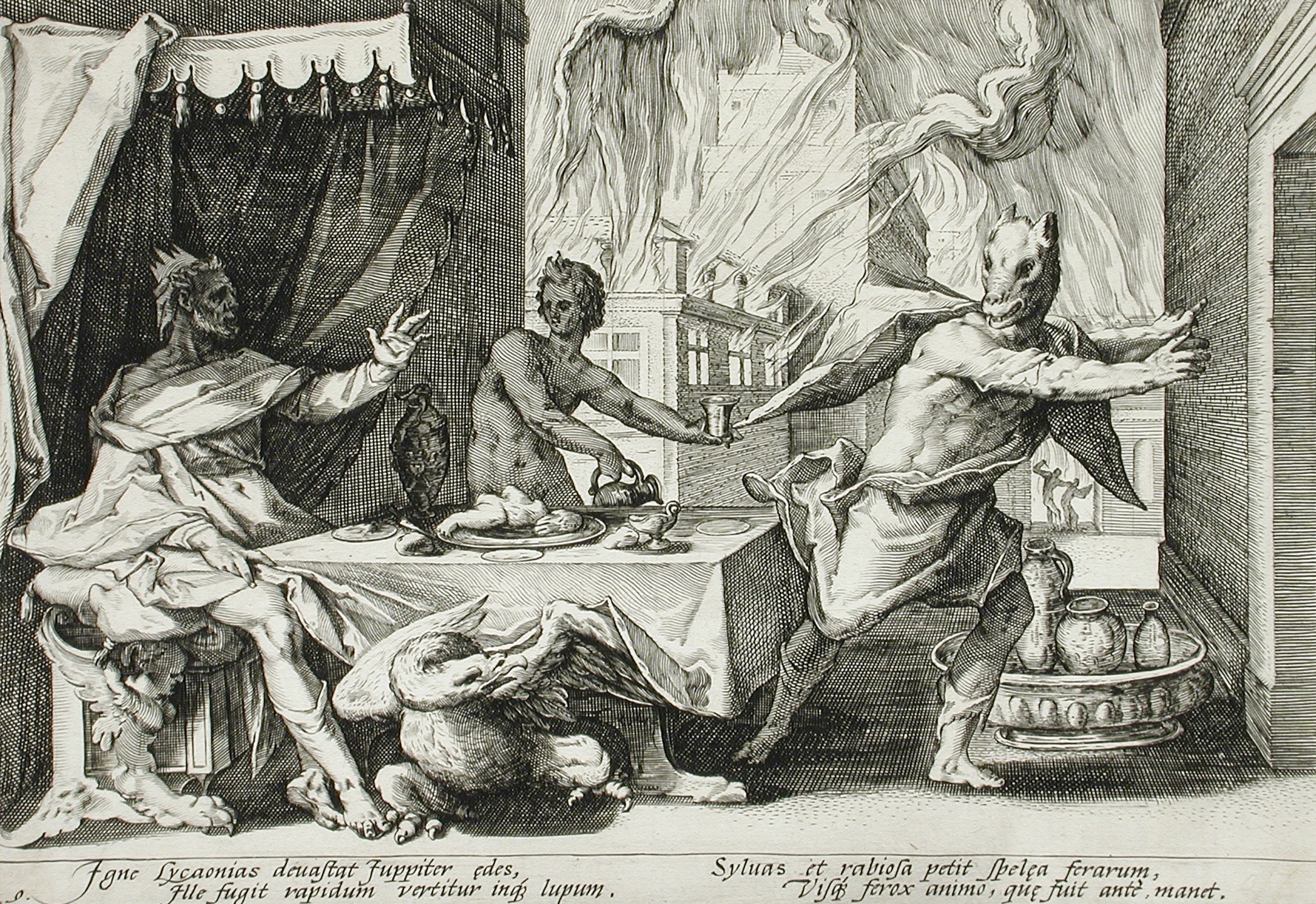|
Aufhocken
The aufhocker () or huckup () is a shapeshifter in German folklore. Characteristics The Aufhocker is described in German legend as having an unidentifiable shape because it takes on shapes such as a goblin, a beautiful woman, a dead man, or various animals. Legend The name Aufhocker means "leap upon". This name is used because according to legend, the Aufhocker would leap upon the back of its victimsRose, Carol (2001). "Giants, Monsters and Dragons: An Encyclopedia of Folklore, Legend and Myth", p. 30. which are often thieves and criminals that need to be taught a lesson. Other common targets in the Aufhocker legend are lone travelers and old women. The Aufhocker is known as a pressure spirit or perching spirit because it jumps on the backs of travelers weighing them down with every step. The victims often die of exhaustion because the Aufhocker cannot be shaken off or killed. However, it is believed that travelers can free themselves if they are able to make it home before ... [...More Info...] [...Related Items...] OR: [Wikipedia] [Google] [Baidu] |
Shapeshifter
In mythology, folklore and speculative fiction, shapeshifting is the ability to physically transform oneself through unnatural means. The idea of shapeshifting is found in the oldest forms of totemism and shamanism, as well as the oldest existent literature and epic poems such as the ''Epic of Gilgamesh'' and the ''Iliad''. The concept remains a common literary device in modern fantasy, children's literature and popular culture. Examples of shapeshifters are vampires and werewolves. Folklore and mythology Popular shapeshifting creatures in folklore are werewolves and vampires (mostly of European, Canadian, and Native American/early American origin), ichchhadhari naag (shape-shifting cobra) of India, shapeshifting fox spirits of East Asia such as the huli jing of China, the obake of Japan, the Navajo skin-walkers, and gods, goddesses and demons and demonesses such as the Norse Loki or the Greek Proteus. Shapeshifting to the form of a wolf is specifically known as lycant ... [...More Info...] [...Related Items...] OR: [Wikipedia] [Google] [Baidu] |
German Folklore
German folklore is the folk tradition which has developed in Germany over a number of centuries. Seeing as Germany was divided into numerous polities for most of its history, this term might both refer to the folklore of Germany proper and of all German-speaking countries, this wider definition including folklore of Austria and Liechtenstein as well as the German-speaking parts of Switzerland, Luxembourg, Belgium, and Italy. Characteristics It shares many characteristics with Nordic folklore and English folklore due to their origins in a common Germanic mythology. It reflects a similar mix of influences: a pre-Christian pantheon and other beings equivalent to those of Norse mythology; magical characters (sometimes recognizably pre-Christian) associated with Christian festivals, and various regional 'character' stories. As in Scandinavia, when belief in the old gods disappeared, remnants of the mythos persisted: There are: * Frau Holle or Perchta, a "supernatural" patron o ... [...More Info...] [...Related Items...] OR: [Wikipedia] [Google] [Baidu] |
Theriomorph
The word ''zoomorphism'' derives from and . In the context of art, zoomorphism could describe art that imagines humans as non-human animals. It can also be defined as art that portrays one species of animal like another species of animal or art that uses animals as a visual motif, sometimes referred to as "animal style". Depicting deities in animal form (theriomorphism) is an example of zoomorphism in a religious context. It is also similar to the term therianthropy; which is the ability to shape shift into animal form, except that with zoomorphism the animal form is applied to a physical object. It means to attribute animal forms or animal characteristics to other animals, or things other than an animal; similar to but broader than anthropomorphism. Contrary to anthropomorphism, which views animal or non-animal behavior in human terms, zoomorphism is the tendency of viewing human behavior in terms of the behavior of animals. It is also used in literature to portray the act of hum ... [...More Info...] [...Related Items...] OR: [Wikipedia] [Google] [Baidu] |


